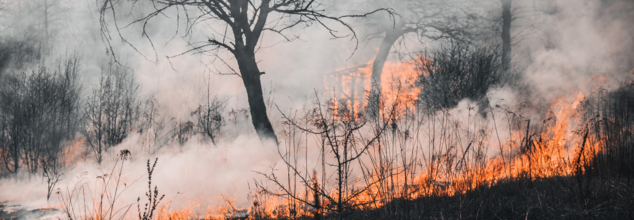- Health Conditions A-Z
- Health & Wellness
- Nutrition
- Fitness
- Health News
- Ayurveda
- Videos
- Medicine A-Z
- Parenting
- Web Stories
NHS Doctor Warns Using Tap Water For This Practice Could Expose You To Brain-Eating Amoeba

(Credit-Canva)
One must be very careful about what they consume. One of the easiest ways to get sick is by eating food or having beverages from unsafe and unsanitary places. That is why people are discouraged from eating at roadside stalls or food from street hawkers who do not follow the food safety protocol.
Many people do not know how unsafe tap water can be. While the tap water available at home goes through treatment, it is best to only drink it after boiling or opting for water from the filter. The Centers for Disease Control and Prevention (CDC) explains that these health issues can range from mild to serious, depending on what germs are being transmitted.
In a TikTok, Doctor Suraj Kukadia who goes by Dr. Sooj, a practicing NHS GP and emergency doctor, issued a critical warning. urgent warning that if you use regular tap water to rinse your nose, you could be exposed to a very rare but dangerous "brain-eating amoeba." Even though tap water in the UK is perfectly safe to drink, it's a different story when it comes to cleaning out your nose.
Why Tap Water Is Risky for Your Nose
Rinsing your nose is a common thing people do when they have a cold, allergies, or a sinus infection. You usually flush water or salt water into your nose to wash away snot, dust, pollen, and anything else that might be irritating your nasal passages. But in a video, a doctor known online as Dr. Sooj, explained why tap water is risky for this. He said that "tap water has bacteria. It has amoeba, it has protozoa. There are tiny living things in the water." When you drink these, your stomach acid usually kills them, but when they go up your nose, it's a different story.
Brain-Eating Amoeba
The main worry is a "brain-eating amoeba" called Naegleria fowleri. This tiny creature loves to live in warm fresh water, like lakes, rivers, and hot springs. The Cleveland Clinic explains water that contains this amoeba goes up your nose, it can travel to your brain. Once there, it causes a very serious and almost always deadly infection called Primary Amebic Meningoencephalitis (PAM). While this infection is rare, it's not worth the risk.
If the amoeba gets into the brain through the nose, it can cause a severe infection called Primary Amebic Meningoencephalitis (PAM). Early signs of PAM can be a headache, fever, feeling sick to your stomach (nausea), and throwing up (vomiting). This infection moves incredibly fast. Most people who get PAM unfortunately die within just 1 to 18 days after they start showing symptoms, often falling into a coma before death. Other symptoms can include a stiff neck, feeling confused, not paying attention to people around you, losing your balance, and seeing things that aren't real (hallucinations).
When to Seek Medical Help
Health experts like the Centres for Disease Control and Prevention (CDC) agree with this advice. They also warn about another amoeba called Acanthamoeba. If you or someone you know starts to have a headache, fever, confusion, or vomiting soon after rinsing your sinuses or nasal passages, it's crucial to get medical help right away.
Is Collagen Worsening Type 2 Diabetes?

Credits: Canva
A new study published in the Journal of the American Chemical Society offers critical insight into the biological mechanisms underlying type 2 diabetes. Researchers from the Indian Institute of Technology Bombay (IIT Bombay), in collaboration with IIT Kanpur and the Chittaranjan National Cancer Institute (CNCI), Kolkata, have identified a key trigger that accelerates the progression of this widespread disease: the structural protein collagen I.
A Rising Global Health Crisis
Type 2 diabetes currently affects over 500 million people worldwide, and numbers are expected to rise sharply in the coming decades. The disease is primarily driven by a combination of genetics, lifestyle factors, and complex cellular mechanisms. At its core lies the dysfunction of pancreatic β-cells, the insulin-producing cells responsible for regulating blood sugar levels.
As diabetes develops, β-cells either fail to produce enough insulin or the body’s cells become resistant to it. A lesser-known yet crucial hormone, amylin, is also secreted by these β-cells and plays a vital role in managing blood sugar after meals. However, in diabetic conditions, excessive amylin production leads to misfolding and toxic clumping, which damages β-cells and accelerates disease progression.
Collagen I Accelerates Amylin Clumping
In the latest study, the research team pinpointed fibrillar collagen I, a common component of the extracellular matrix, as a key factor driving the toxic aggregation of amylin. Found abundantly in connective tissues like skin and bones, collagen I is also present in the pancreatic environment—particularly in diabetic tissues where it is elevated.
“Every tissue is composed of cells and an extracellular matrix that provides structural support. In diabetic pancreatic tissue, this matrix, especially collagen I, becomes more prominent,” explained Prof. Shamik Sen, the study’s lead investigator from the Department of Biosciences and Bioengineering at IIT Bombay.
The researchers discovered that collagen I acts like a scaffold or platform, accelerating the misfolding and aggregation of amylin, which in turn damages β-cells. This discovery adds a new layer to understanding why the disease worsens over time, even with treatments targeting cellular pathways.
Biophysical Evidence Supports Findings
To investigate how collagen I interacts with amylin, the team used a suite of advanced biophysical tools. These included surface plasmon resonance to measure binding strength, atomic force microscopy to study molecular adhesion, thioflavin T fluorescence to track aggregation speed, and NMR spectroscopy to identify interacting regions of the molecules.
“Amylin almost coats the collagen fibres, forming stable, toxic aggregates that cells struggle to clear,” said Prof. Sen. The behavior of amylin on collagen fibres resembled trains moving on tracks—quickly and with destructive momentum.
Computer simulations by Prof. Prasenjit Bhaumik’s group at IIT Bombay confirmed that fibrillar collagen I accelerates the toxic aggregation process, offering further validation of the molecular interaction.
Biological Evidence from Mouse and Human Tissues
The team extended their study to biological samples from diabetic mice and humans. With the help of Prof. Hamim Zafar and Prof. Sai Prasad Pydi from IIT Kanpur, and Dr. Sankhadeep Dutta from CNCI, they analyzed single-cell data and tissue architecture.
The findings were striking: as diabetes progressed, both collagen and amylin levels rose, accompanied by damage to pancreatic islets—clusters of cells that house insulin-producing β-cells.
Testing the Combined Effect on Cells
To test the functional impact, the researchers grew lab-engineered β-cells on collagen gels containing amylin. These cells showed increased oxidative stress, reduced insulin production, and higher rates of cell death, compared to controls grown without collagen or amylin.
This suggests that the extracellular environment, particularly collagen I, plays a central role in worsening β-cell dysfunction in diabetes.
The findings could explain why many diabetes treatments fall short—they overlook the external microenvironment contributing to disease progression. “Unless we disrupt the interaction between amylin and collagen, we may not be able to eliminate the toxic pancreatic environment,” said Prof. Sen.
Looking ahead, the team is working on cryo-electron microscopy (cryo-EM) models to visualize how amylin and collagen interact at the molecular level. They are also exploring 3D tissue engineering strategies to restore pancreatic function by replicating healthy extracellular conditions.
Wildfire Smoke May Rewire Your Immune System, Scientists Warn: Here’s How It Impacts Your Health

Credits Canva
As wildfires become an all-too-familiar headline across the globe, their visible devastation—scorched forests, lost homes, and displaced communities—often overshadows a more insidious threat: the impact of wildfire smoke on human health. While the immediate dangers of flames and evacuations are clear, a new study published in Nature Medicine reveals that wildfire smoke does far more than irritate eyes and throats. It can fundamentally alter the immune system, potentially making people more susceptible to illness long after the smoke has cleared.
The study, led by researchers from the Harvard T.H. Chan School of Public Health, found that people exposed to wildfire smoke exhibit changes in gene expression and immune function, even if they’re otherwise healthy. This suggests that the health consequences of wildfires may extend far beyond the immediate coughing, wheezing, and watery eyes that so many experience during fire season.
How Smoke Alters Immunity?
The research, led by Dr. Kari Nadeau of the Harvard T.H. Chan School of Public Health, provides the most detailed look yet at how wildfire smoke affects the body on a cellular level. By analyzing blood samples from 31 firefighters and civilians exposed to wildfire smoke and comparing them to 29 unexposed individuals, the study uncovered a complex web of immune changes.
People exposed to wildfire smoke showed a marked increase in memory immune cells—cells that typically provide long-term immunity. At first glance, this might seem beneficial, but the study also found elevated biomarkers of inflammation and immune activity, as well as changes in dozens of genes linked to allergies and asthma. In short, the immune system was not just activated—it was thrown into overdrive, potentially increasing vulnerability to illness.
Dr. Mary Johnson, the study’s lead researcher, explains, “Our findings demonstrate that the immune system is extremely sensitive to environmental exposures like fire smoke, even in healthy individuals. Knowing exactly how may help us detect immune dysfunction from smoke exposure earlier and could pave the way for new therapeutics to mitigate, or prevent altogether, the health effects of smoke exposure and environmental contaminants.”
What’s in Wildfire Smoke?
Wildfire smoke is a toxic brew. It contains:
- Fine particulate matter (PM2.5)
- Toxic gases
- Heavy metals
- “Forever chemicals” like PFAS
- Cancer-causing compounds
The ultra-fine PM2.5 particles are particularly dangerous. At less than 2.5 micrometers in diameter, they are 28 times smaller than the width of a human hair and can be inhaled deep into the lungs, enter the bloodstream, and affect organs throughout the body.
“These findings suggest that even short-term exposure to wildfire smoke can act as a biological stressor with long-lasting effects,” said Dr. Mary Johnson, lead researcher and environmental health scientist at Harvard. “That’s especially concerning as wildfire seasons grow longer and smoke plumes travel farther.”
What are the Genetic Impacts of Wildfires?
One of the most striking findings of the study was the alteration of 133 genes related to allergies and asthma in those exposed to wildfire smoke. This genetic shift may help explain why people living in wildfire-prone areas often report more respiratory problems, even months after the fires have ended.
The study also found that smoke-exposed individuals had more immune cells affected by toxic metals, further increasing inflammation and the risk of immune dysfunction. These changes may make people more susceptible to infections, worsen existing respiratory conditions, and potentially contribute to the development of new allergies or asthma.
The United States, particularly western states like California, has witnessed a dramatic increase in wildfire frequency and severity. In 2023 alone, California experienced over 7,000 wildfires, with the California Department of Forestry and Fire Protection responding to nearly 590,000 related emergencies. The devastating January 2025 fire in Los Angeles County, which claimed 30 lives and scorched 40,000 acres, underscored the deadly toll of these disasters.
Climate change is a major driver, creating hotter, drier conditions that fuel longer and more intense fire seasons. As wildfires become more common, understanding and mitigating the health risks of smoke exposure is more urgent than ever.
What are the Immediate and Long-Term Health Effects?
Wildfire smoke can trigger a range of symptoms, from burning eyes and runny noses to persistent coughs and breathing difficulties. For people with pre-existing conditions like asthma, COPD, or eczema, exposure can lead to dangerous flare-ups.
But the risks extend beyond the lungs. Fine particulate matter (PM2.5) can enter the bloodstream, causing inflammation throughout the body. Studies have linked wildfire smoke to increased emergency room visits for heart attacks and coronary heart disease within 24 hours of exposure. There is also emerging evidence that PM2.5 can impair cognitive functions such as memory and attention, likely by inducing inflammation in the brain.
How to Protect Yourself and Your Family?
Experts emphasize the need for proactive measures as wildfire season peaks:
- Stay indoors when smoke levels are high. Keep windows closed and seal gaps in doors.
- Use HEPA-grade air purifiers to reduce indoor particle pollution.
- Wear a certified N95 mask when outdoors, especially if you’re in a smoke-affected region.
- Monitor air quality via apps or government alerts, such as AirNow.gov.
- Avoid outdoor exercise when AQI levels are poor; opt for indoor alternatives instead.
- Keep emergency medications handy, especially for people with asthma or heart conditions.
If evacuation orders are issued, follow them promptly—not just for safety from flames, but from the health threats the smoke carries.
As wildfires continue to reshape landscapes and communities, their invisible legacy—on our immune systems and overall health—demands urgent attention. The message from scientists is clear: wildfire smoke is not just an environmental nuisance, but a profound health hazard that can affect anyone, anywhere the wind blows. Proactive measures, informed guidelines, and continued research are essential to protect public health in an increasingly fiery world.
24-Year-Old Suffered A Heart Attack Due To Vaping, Now He Has Permanent Lung Damage - 'I Have The Lungs Of A 70-Year-Old Now'

(Credit-Canva)
Recent years have seen a rapid rise in kids vaping all over the world. A popular habit among young teens as well as young adults, vaping is the act of inhaling aerosol from electronic cigarettes or vape. But this popular habit has cost the health and well-being of this 24-year-old, who took to social media to warn people about this habit, as reported by the People.
“I Have Been Vaping Since The Age Of 12”
A young man is taking to social media with a serious warning for anyone who uses e-cigarettes. He claims that vaping caused him to suffer a heart attack at just 24 years old and has led to lasting lung damage. Through a series of TikTok videos, Jacob Temple from Kentucky is urging people to quit vaping right away.
Temple, who started vaping at age 12, now says his lungs are like those of a 70-year-old man. He explained that he has permanent scarring on part of his lungs, meaning he can never fully inflate or deflate them again. "It feels like I’m breathing through a straw constantly, always, just never getting enough air and there’s nothing that can be done," he shared. This damage means he'll forever feel like he's not getting enough oxygen.
Lung Damage As Well As Suffering Heart Health
Temple also revealed that his vaping habit directly led to a "minor" heart attack, specifically an anterior myocardial infarction. He described the terrifying experience, saying, "My whole body was fighting to stay alive at a certain point." While the physical damage to his lungs can't be fixed, he hopes his story will motivate others to stop vaping before it's too late for them.
Temple admits he still has "good days and bad days." On some days, he can be active with the help of his rescue inhaler. However, on other days, he can barely function and struggles to sleep. He reflected on his past habit, saying, "It was fun while it lasted, but now I am paying for it dearly." His struggle highlights the long-term, painful consequences of what might seem like a harmless habit.
Research Warns Against Vaping
In a 2021 BMJ Case Reports study, researchers explored the link between vaping spontaneous pneumothorax, which is when air leaks into the space between your lung and chest wall, causing the lung to collapse. They also presented a case study of a A 34-year-old man, who was a healthy weight, came to the emergency room struggling to breathe and experiencing back pain for a full day.
An X-ray of his chest showed a large collapsed lung on his right side. He had quit regular cigarettes three years prior and switched entirely to vaping. A more detailed CT scan revealed bullae (air-filled sacs) in his lungs, and he had to undergo surgery to remove part of his lung. Lab tests on the removed tissue showed mild inflammation.
There are many other studies like the same, prompting researchers and healthcare professionals to issue warnings.
Temple’s case is not an isolated incident; there are many who have suffered the same fate.
How To Quit Vaping?
According to Heart Organization, quitting smoking or vaping for good can seem tough, but it's totally possible. Just take it one step at a time. Here are five easy steps to help you on your journey to a healthier life.
Pick Your "Quit Day" and Make a Promise
Choose a day within the next week when you'll completely stop. This is your "Quit Day"! Promise yourself and tell supportive friends you're quitting. Slowly cut down before this day.
Choose How You'll Quit
You have options: go "cold turkey" and stop all at once, or cut down slowly each day. For example, reduce cigarettes from 20 to 10, then 5. Or take fewer puffs from each one.
Talk to Your Doctor About Help
Speak with your doctor. They can tell you if medicines or other support tools, like patches or gum, would make quitting easier for you. Get their personalized advice to help you succeed.
Plan for Your Quit Day and Beyond
Get ready for your Quit Day! Have healthy snacks ready, like fruits or gum. Plan fun activities to keep busy when you feel like smoking. Try a walk, movie, or new hobby to keep your hands busy.
© 2024 Bennett, Coleman & Company Limited

